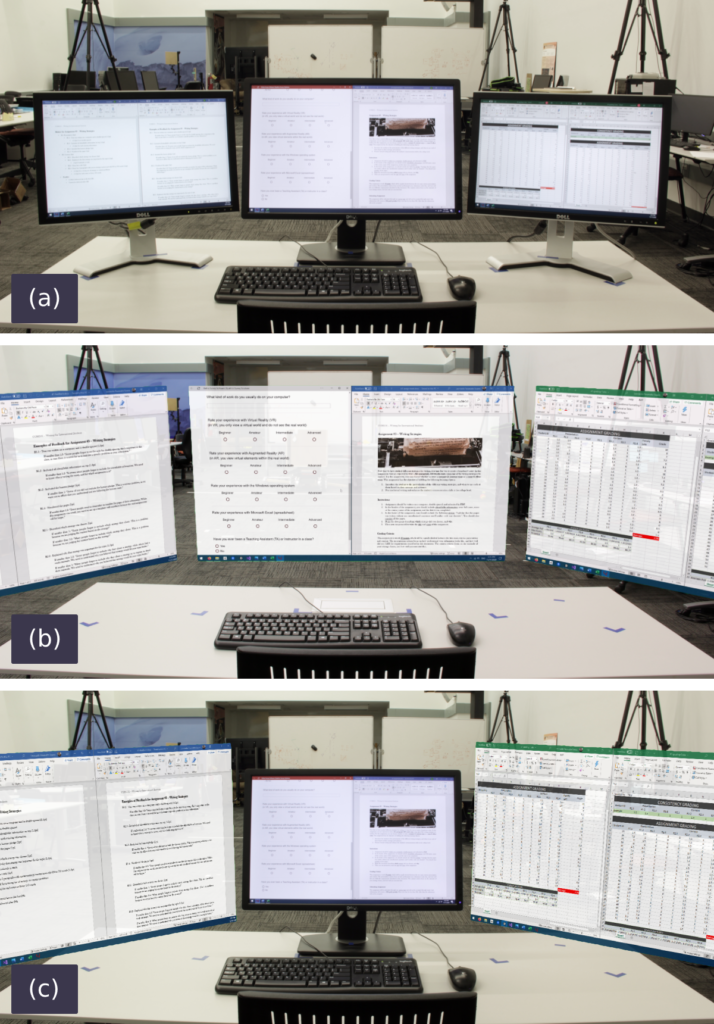
The value of multiple, large displays is well established for physical monitors. High-resolution displays with wide aspect ratios can fit large quantities of content side-by-side, allowing users to manage and visualize multiple windows at the same time. These capabilities are essential for productivity tasks. However, the adoption of these devices is not without a cost. Physical monitors require space, lack flexibility, and can become expensive and less portable in large setups. For instance, a student in a classroom or a passenger on a train is unable to use large display setups and is limited to a small laptop display. Moreover, the rising trend towards working from home, which was accelerated due to the COVID-19 pandemic, requires us to explore more flexible approaches that provide novel capabilities to workers.
We explore the effects of replacing or expanding physical monitors with virtual monitors for productivity tasks. Virtual monitors should be able to minimize those problems, but may be subject to technological limitations such as lower resolution and field of view. We conducted a user study that compared physical monitors, virtual monitors, and a hybrid combination of both in terms of performance, accuracy, comfort, focus, preference, and confidence. Results show that virtual monitors are a feasible approach for performing serious productivity work, albeit currently constrained by technical limitations that lead to inferior usability and performance compared to physical monitors. We also discovered that, with current technology, the hybrid condition was a better trade-off between the familiarity and trustworthiness of physical monitors and the extra space provided by virtual monitors.
Conferences
Designing Augmented Reality Virtual Displays for Productivity Work Conference
Doctoral consortium of the IEEE International Symposium on Mixed and Augmented Reality (ISMAR), IEEE, 2021.
2021 IEEE Virtual Reality and 3D User Interfaces (VR), IEEE 2021.

